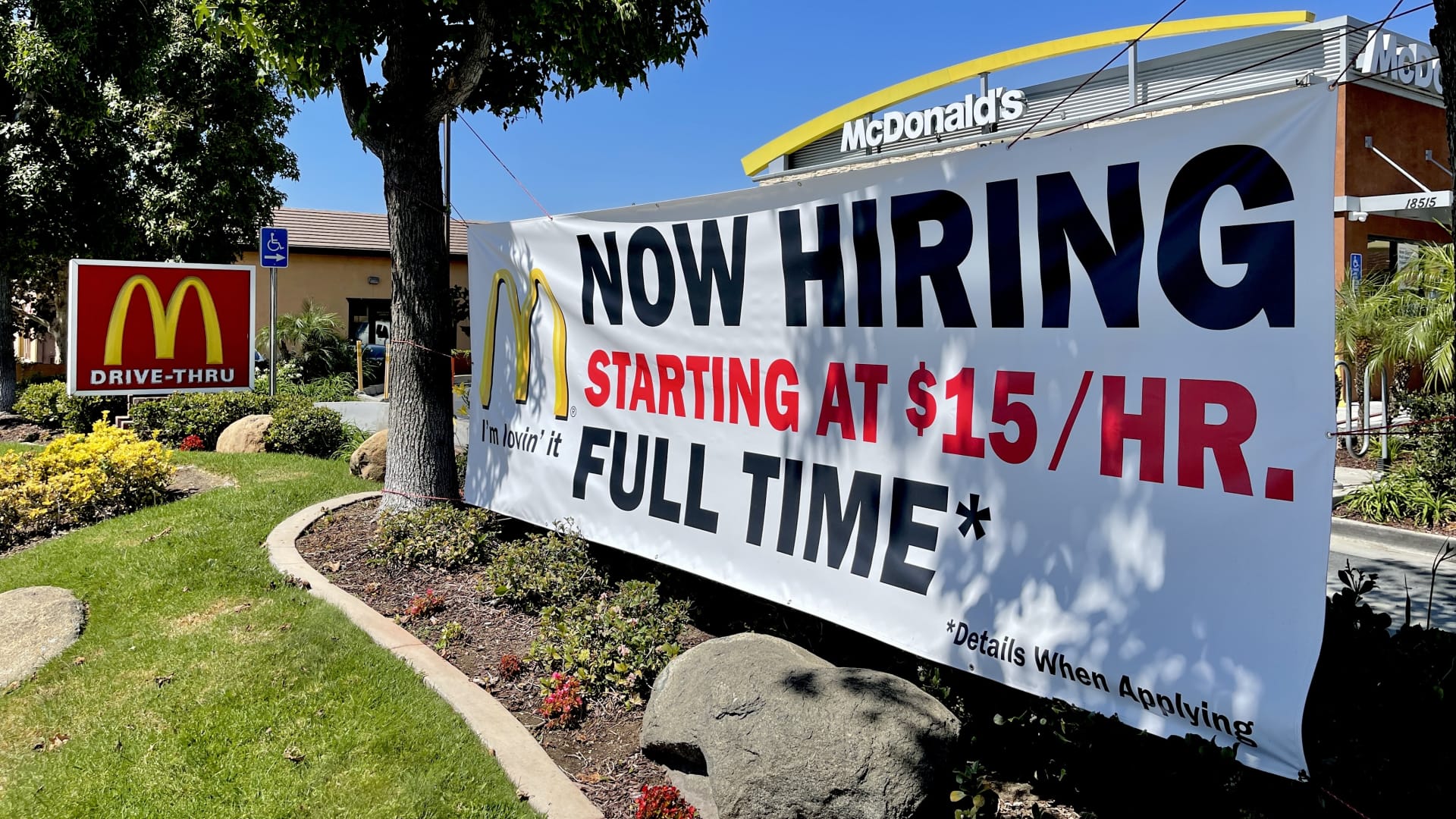The U.S. labor market showed no signs of letting up in June, as companies created far more jobs than expected, payroll processing firm ADP reported Thursday.
Private sector jobs surged by 497,000 for the month, well ahead of the downwardly revised 267,000 gain in May and much better than the 220,000 Dow Jones consensus estimate. The increase resulted in the biggest monthly gain since July 2022.
From a sector standpoint, leisure and hospitality led with 232,000 new hires, followed by construction with 97,000 and trade, transportation and utilities at 90,000.
Annual pay rose at a 6.4% rate, representing a continued slowing that nonetheless still is indicative of brewing inflationary pressures.
“Consumer-facing service industries had a strong June, aligning to push job creation higher than expected,” said ADP chief economist Nela Richardson. “But wage growth continues to ebb in these same industries, and hiring likely is cresting after a late-cycle surge.”
The unexpected jump in payrolls comes despite more than a year’s worth of Federal Reserve interest rate increases aimed in large part to cool a jobs market in which there are still nearly two open positions for every available worker.
ADP’s count comes a day ahead of the more closely watched nonfarm payrolls report from the Department of Labor. That is expected to show an increase of 240,000 after a 339,000 gain in May. While the two reports can differ broadly, the ADP numbers pose some upside risk for Friday’s report.
Other industries seeing solid gains included education and health services (74,000), natural resources and mining (69,000) and the “other services” classification (28,000).
Manufacturing lost 42,000 jobs, while information was off 30,000 and financial activities saw a decline of 16,000.
Broadly speaking, service providers contributed 373,000 of the total, while goods producers added 124,000.
Companies with fewer than 50 employees were responsible for most of the job growth, adding 299,000 positions. Firms with more than 500 workers lost 8,000 jobs, while mid-size companies contributed 183,000.
